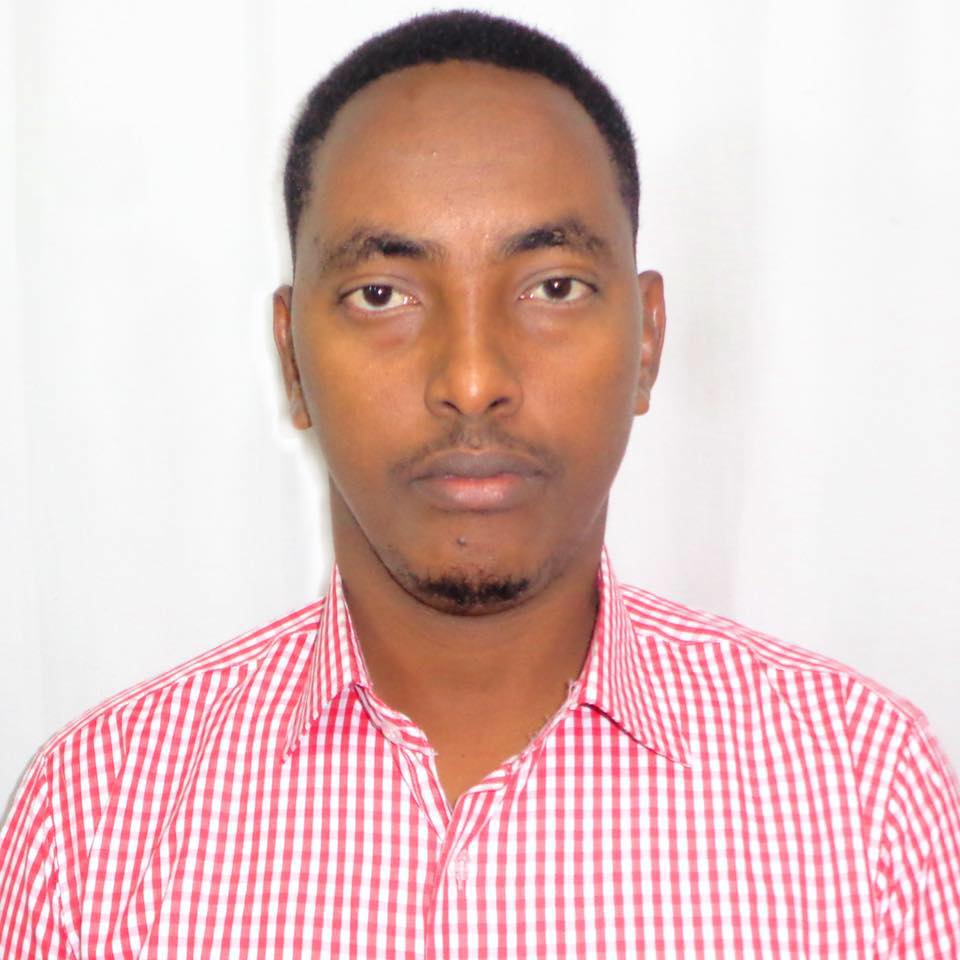واجهت الصحافة الصومالية في العقود الثلاثة الأخيرة عقبات كثيرة، فبعد سقوط الدولة المركزية عام 1991، انتهت مرحلة الهيمنة الإعلامية بالنسبة للدكتاتور العسكري محمد سياد بري (1969 - 1991) وحل محلها فضاء إعلامي انتشر كالنار في الهشيم في طول البلاد وعرضها.
بعد الحرب الأهلية
بدأت الصحف والجرائد تمجد قادة الانقلابيين على النظام العسكري، ثم تحولت إلى أبواق للقبائل والمليشيات العسكرية، ثم انتقلت من صحف وطنية إلى صحف ذات صبغة عشائرية، بل وساهمت في تأجيج الصراعات والنعرات القبلية، مما دفع بالكثير من أقلامها وصحفييها إلى الهجرة عنها أو العزوف عن الكتابة. كما أن بعض هذه الصحف -وخاصة تلك التي تمتاز بالموضوعية والحيادية- احتجب عن الصدور نتيجة طغيان الصحف ذات الأخبار المزيفة على الواقع الإعلامي في البلاد.
في مطلع العام 1991، بدأت الإذاعات المحلية تنتشر في البلاد على غرار الصحف والجرائد. لكن مع ظهور الراديو في مقديشو وغيرها من المناطق، اتجهت اهتمامات الجمهور في الصومال من الصحافة المكتوبة إلى الراديو، نظرا لأن المجتمع الصومالي سمعي بامتياز ولا يميل إلى القراءة أو متابعة صحف ذات أعداد قليلة من الأوراق.
ومع انتشارها، استأثرت الإذاعات المحلية باهتمامات الجمهور، مما دفع الكثير من الصحفيين والتجار إلى تدشين إذاعات جديدة بغية تحقيق مكاسب سياسية أو تجارية عبر الدعاية والإعلانات، وبعضها أصبح أداة بيد أمراء الحرب، وبعضها الآخر بيد أفراد وشخصيات تحظى بثقل سياسي أو تجاري في البلاد.
ورغم هذا الانتشار الواسع للإذاعات المحلية، فإنها لم تكن جزءًا من عملية السلام أو لدعم جهود الاستقرار السياسي في البلاد، نتيجة خضوع تلك الوسائل الإعلامية لطرف من أطراف الصراع الصومالي، مما أدى إلى تآكل سمعة ومصداقية تلك المحطات الإعلامية، بل وأصبحت عديمة الفائدة، لتتحول إلى أبواق إعلامية لا تتمتع بالقدر المطلوب من المهنية والموضوعية في سرد ونقل الأخبار، الأمر الذي أدى إلى اندلاع صراعات بين مليشيات أمراء الحرب والمحاكم الإسلامية أواخر العام 2004، وأدى لاحقاً إلى توغل عسكري إثيوبي في الصومال عام 2006، لينتهي بذلك دور المحطات الإذاعية التي ملأت آذان الصوماليين وأذهانهم بأغاني الحرب لا السلام والاستقرار لمدة عقد ونيف من الزمن.
في العام 2008، بدأت شاشات التلفزة تغزو منازل الصوماليين، وانطلقت قنوات تلفزيونية محلية لتأخذ حصة الإذاعات والصحف الصومالية، وتمكنت من اجتياز الحدود والجغرافيا.
فإذا كانت جغرافية التغطية للإذاعات المحلية مقتصرة فقط على مقديشو أو المناطق المجاورة لها، أطاحت القنوات الإعلامية بالحدود الجغرافية، وبدأت تنقل أخبار المهجر والداخل. لكنها هي الأخرى فقدت الرؤية والبصيرة الإعلامية، بل كان هدفها الأكبر تجاريا، ولم يكن تثقيف الجمهور الصومالي أو توفير قدر أكبر من الوعي الجمعي للسياسيين من بين أولوياتها، وأصبح تأثيرها كبيرًا بين الصوماليين في المهجر، لكنه كان يتضاءل مع كل انتشار للمواقع الإعلامية الإلكترونية التي كانت الأسرع والأدق تفصيلا في نقل الأخبار بدون إضافات أو بهارات إعلامية.
اتجاهات ومدارس
مع بدايات العام 2010، ونتيجة للنزوح الداخلي وهجرة الكثير من الشباب إلى الخارج بسبب الحروب الطاحنة في مقديشو وضواحيها، بدأ الجمهور الصومالي يتجه نحو متابعة المواقع الإلكترونية الإخبارية التي كانت تنقل صور وأخبار المعارك المستمرة بين المليشيات المسلحة والقوات النظامية.
وبالرغم من أن معظم تلك المواقع انحازت في بدايتها إلى ما سمي بالمقاومة الصومالية ضد الإثيوبيين، فإنها مالت أخيرا نحو القوات الصومالية للحد من بطش المسلحين ذوي التوجهات الأيديولوجية. وانصب اهتمام تلك المواقع على نقل أخبار القوات النظامية وإنجازاتها العسكرية، في مقابل التغطية المكثفة على تراجع المليشيات الصومالية في أنحاء متفرقة من البلاد.
لكن ظهور مواقع التواصل الاجتماعي -وخاصة الفيسبوك- وارتفاع نسبة مستخدمي الإنترنت في الصومال نتيجة تحسن أداء خدماته في البلاد بعد العام 2012، قلبا الموازين رأسا على عقب، وأصبح الإعلام البديل يسيطر على الإعلام المحلي، بل وأصبحت الأخبار تنتشر انتشارا واسعا على وسائل التواصل الاجتماعي قبل أن تظهر في مواقع أو نشرات الأخبار الرئيسية للقنوات والإذاعات الصومالية. كما أن التحقق من صدقية الأخبار بات أمرا صعبا بالنسبة للكثير من القائمين على وسائل الإعلام المحلية (القنوات والصحف والإذاعات)، وذلك نتيجة طغيان الشائعات والأخبار المزيفة على معظم منصات التواصل الاجتماعي، بل وبدأت بعض الجهات الأجنبية تصمم وتمول صفحات على الفيسبوك من أجل النيل من الحكومة الصومالية وفرض أجندات إخبارية محشورة بالكذب على المشاهد والمتابع الصومالي.
وتشهد تلك المنصات الإعلامية انتشارا واسعا مع قرب موعد الاستحقاق الانتخابي في الصومال بغرض تشويه سمعة جهة سياسية ما تريد خوض غمار الانتخابات الرئاسية في البلاد، وهو ما بات ملفتا للجميع، مما دفع الكثير من الشباب إلى دخول مدارس تعنى بالصحافة الرقمية في مقديشو.
يقول مدير أكاديمية الصومال للإعلام الرقمي عبد الرحمن حسن إن "الصومال جزء من هذا العالم الذي أصبح قرية صغيرة بسبب الثورة الإعلامية الرقمية. وهذا التطور أدى إلى ظهور مدارس للإعلام الرقمي لم يعرفها الصومال". ويشير إلى أن أكاديميته ساهمت في نشر التربية الإعلامية في البلاد، ومحاربة الأمية الإعلامية والمعلوماتية، بحيث لم يعد الأمي اليوم إلا ذلك الإنسان العاجز عن التعامل مع الإعلام الرقمي وأدواته.
ويضيف حسن أن وسائل التواصل الاجتماعي بات تأثيرها أمرا ظاهرا بشكل كبير، وإن كان استخدامها لنشر الشائعات أمرا منتشرا في البلاد، حتى ظن البعض أن هذا الإعلام جاء لغرض الشائعات فقط، وهو ما يحتم على الجهات المعنية القيام بتوعية كبيرة في هذا المجال، خاصة أن للإعلام الرقمي دورا أكثر تأثيرا في تغيير اتجاهات الجمهور مقارنة بالإعلام التقليدي الذي كان يعتمد على وسائل قديمة لا تصلح لأمة رقمية في عالم متحول.
وتأسست هذه الأكاديمية عام 2017، وهي واحدة من المدارس الرقمية الجديدة في مقديشو، واستقطبت عددا كبيرا من الشباب المحترف في التصوير والمونتاج والإخراج الصحفي، وتخرج منها نحو 500 شاب يتسلح بمهارات الإعلام الرقمي، لا سيما في إنتاج المحتوى الإخباري للمنصات الاجتماعية والتصوير الاحترافي والمونتاج.
وقت التغيير
يعزو الكثير من المحللين أسباب صعود شعبية الرئيس الصومالي محمد عبد الله فرماجو إلى حصوله على تأييد واسع من الشباب، وهم الذين ساهموا طواعية في نشر أخباره وإنجازاته ووطنيته في منصات التواصل الاجتماعي، مما أدى إلى انتخابه رئيسا للبلاد عام 2017، بغض النظر عن حملته الانتخابية التي كانت ضعيفة ودون المستوى.
ونظرا لتلك التجربة الإعلامية، تهافت الكثير من الصوماليين -وخاصة الأحزاب السياسية- على مواقع التواصل الاجتماعي (فيسبوك) من أجل تغيير قناعات واتجاهات الجمهور الصومالي. كما أن تأثير الشائعات وصور التفجيرات تطغى دوما على الأخبار الاجتماعية والاقتصادية، وأن أشهر رواد المواقع الاجتماعية هم الذين ينقلون الشائعات والأخبار المزيفة، بسبب غياب منصات اجتماعية ذات محتوى إخباري هادف أو تحمل رسائل إعلامية وأجندات إخبارية حقيقية، الأمر الذي أفسح المجال لهواة الصحافة، وأصبحت منصاتهم وصفحاتهم وحساباتهم على تويتر وفيسبوك تحظى بآلاف المتابعين على خلاف الإذاعات والقنوات والمحطات الإعلامية الأخرى، مما يعكس مدى ارتفاع أهمية الإعلام الرقمي في حياة المجتمع الصومالي.
أخيرًا، يمكن القول إن الإعلام الرقمي في الصومال باتت اتجاهاته اليوم متداخلة، وتتغير مضامينه وتكثر أدوات تأثيره بين الحين والآخر، ويبقى الإعلام البديل مجرد سلاح فتاك ذي حدَّين، لكن غياب رؤية إعلامية لأصحاب المنصات الاجتماعية وعدم وجود الرقابة الحكومية، من شأنه أن يساهم في انتشار الشائعات والتضليل الإعلامي، الشيء الذي سيفقد المؤسسات الإعلامية مهنيتها وموضوعيتها لتغيير اتجاهات الجمهور الصومالي الذي أصبح اليوم يتابع بشغف ما يشاع من أخبار في المنصات الاجتماعية.
* الصورة: فيصل عمر - رويترز







































